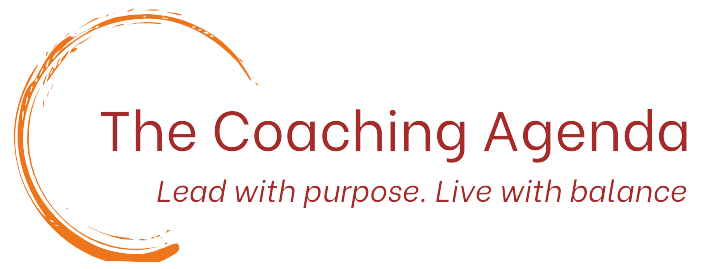Nudge Theory in Coaching: Shaping Leaders Without Forcing Change
In the evolving world of leadership development, coaches increasingly seek techniques that go beyond goal-setting and action planning to influence meaningful, lasting behavioural change. One concept that has quietly but powerfully reshaped public policy, behavioural economics, and workplace design—nudge theory—is now ripe for thoughtful application in coaching. But to wield it effectively, coaches must understand not only its potential, but also its limits, and where it harmonises—or clashes—with other behavioural and leadership theories.
What Is Nudge Theory?
Coined by Richard Thaler and Cass Sunstein in their 2008 book Nudge, the theory is grounded in behavioural economics. It asserts that people can be gently guided (or “nudged”) toward better decisions by subtly altering the environment in which they make choices, without restricting freedom.
The classic example? Placing healthy food at eye level in a cafeteria so people are more likely to choose it. A nudge is not a mandate—it preserves autonomy while encouraging better outcomes.
Why Nudge Theory Matters in Coaching
Leadership coaching, especially for emerging leaders, is about enabling the coachee to explore their own beliefs, habits, and aspirations—and develop new behaviours aligned with personal and professional growth. Unlike training, coaching does not instruct. Nudge theory’s subtle approach aligns perfectly with this ethos.
Application in Coaching Practice
Reframing the Environment
Coaches can help leaders reframe the psychological "environment" in which they make decisions. For instance, a leader who tends to avoid difficult conversations might be nudged by altering how they visualise the value of those conversations—not as conflict, but as opportunities for alignment and clarity.Default Thinking and Bias Awareness
Much of leadership behaviour is habitual. Nudge theory helps illuminate how defaults (status quo bias, for example) impact decisions. A coach might work with a leader to question their default responses to stakeholder conflict, nudging them to pause before reacting, or to adopt “if–then” planning (e.g., If I feel criticised in a meeting, then I will ask for clarification before responding).Choice Architecture
In coaching, we can use choice architecture to frame reflections. Instead of asking a leader “What do you want to do next?”, reframing with nudged options—“Would you prefer to have a quick-win action this week, or commit to a longer-term experiment?”—can help a coachee take action with clarity and confidence.Accountability Nudges
Simple changes in how we design follow-ups—such as co-creating visible action trackers or sending gentle prompts between sessions—can nudge consistent reflection and behaviour change, without being directive.Behavioural Commitment Devices
Helping a leader make a public micro-commitment to their team (e.g., “I will start every team meeting with a recognition moment”) acts as a nudge that leverages reputation and consistency bias—strong motivators of behavioural change.
Complementary Theories to Nudge in Leadership Development
1. Self-Determination Theory (SDT)
SDT, by Deci and Ryan, posits that autonomy, competence, and relatedness are key to intrinsic motivation. Coaching that uses nudges respects autonomy and supports competence, enhancing rather than replacing internal drive.
Integration: Nudge theory can be a tool within an SDT-aligned coaching framework, subtly guiding leaders toward intrinsically motivated change.
2. Cognitive Behavioural Coaching (CBC)
CBC focuses on identifying and reworking unhelpful beliefs. Nudges—like visual cues, reframed language, or reminders—can support a CBC process by gently disrupting habitual patterns.
Integration: Nudge theory can reinforce new cognitive pathways once a belief has shifted.
3. Positive Psychology
Nudge theory’s success often relies on designing environments that encourage flourishing and constructive behaviour. Coaches using positive psychology can embed nudges to help leaders focus on strengths and build resilience habits.
Contradictory or Tension-Rich Theories
1. Transformational Leadership Theory
Transformational leadership development typically emphasises deep, values-based change. Critics might argue that nudges are superficial—targeting surface-level behaviours rather than mindset shifts.
Tension: Nudge theory operates best on micro-decisions, while transformational leadership seeks macro-identity shifts. However, nudges can support transformation by making new values-based behaviours easier to enact.
2. Psychoanalytic Coaching
Psychoanalytic or depth coaching explores unconscious patterns, transference, and emotional entanglements. Nudge theory, rooted in external behavioural design, does not venture into the unconscious.
Contradiction: In this approach, lasting change may only arise from deep emotional insight, not external environmental shifts. Nudges may seem reductive or insufficient.
3. Directive Models of Leadership Coaching
More structured, instructional models of coaching (e.g., GROW with prescriptive mentoring overlays) may not require nudging at all. In these settings, the coach tells the leader what to do or prioritise, which nullifies the need for subtle behavioural architecture.
Ethical Considerations: The Dark Side of Nudging
As coaches, we must grapple with one critical issue: whose agenda is the nudge serving?
There’s a fine line between influence and manipulation. For instance, nudging a leader toward a communication style more acceptable to corporate norms may unconsciously suppress authentic expression or cultural identity. Coaches must stay vigilant about consent, transparency, and coaching ethics—especially when nudges are subtle.
A Vision for the Nudge-Savvy Leader
What if leaders themselves became students of nudge theory? Imagine leaders designing team rituals that make collaboration easier, or physical spaces that prompt inclusiveness. Leaders who can self-nudge—who understand their own cognitive biases and build systems to pre-empt their own blind spots—are more adaptive, resilient, and self-aware.
This is not about manipulation. It’s about making it easier to do the right thing—consistently and authentically.
Conclusion: Nudge, Don’t Shove
Nudge theory offers a gentle, yet powerful lever in the coach’s toolkit—one that aligns beautifully with coaching’s core values of autonomy, partnership, and personal growth. While it may not replace deeper change models, it can bridge the gap between insight and sustained behavioural action.
When used ethically and consciously, nudging is not about control. It’s about compassionate structure—creating environments that help leaders become the best version of themselves, without forcing it.
